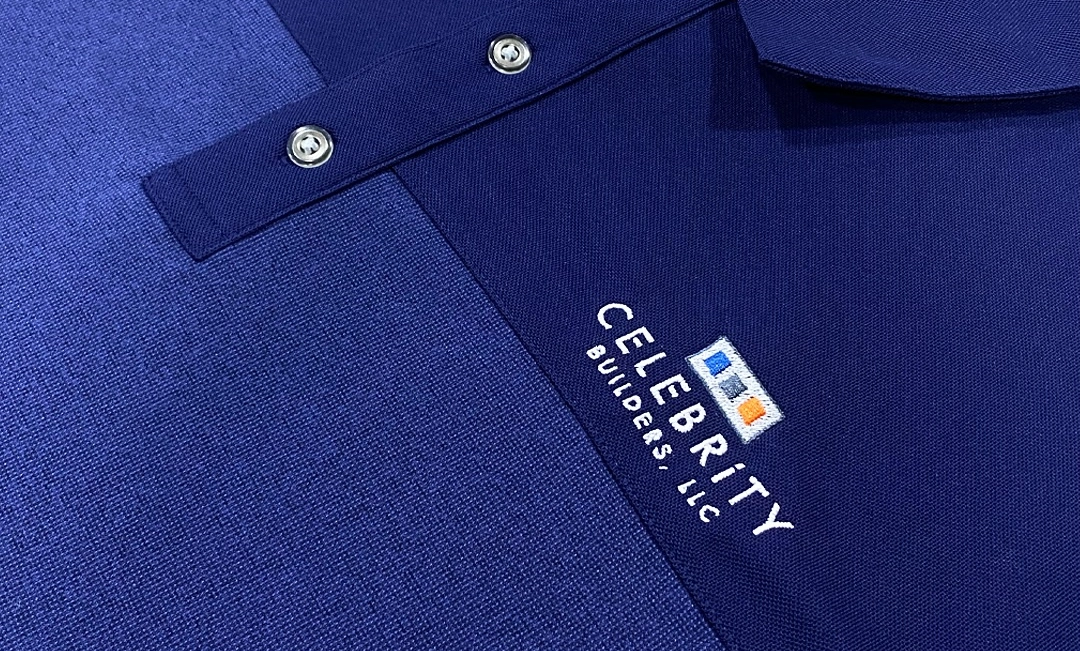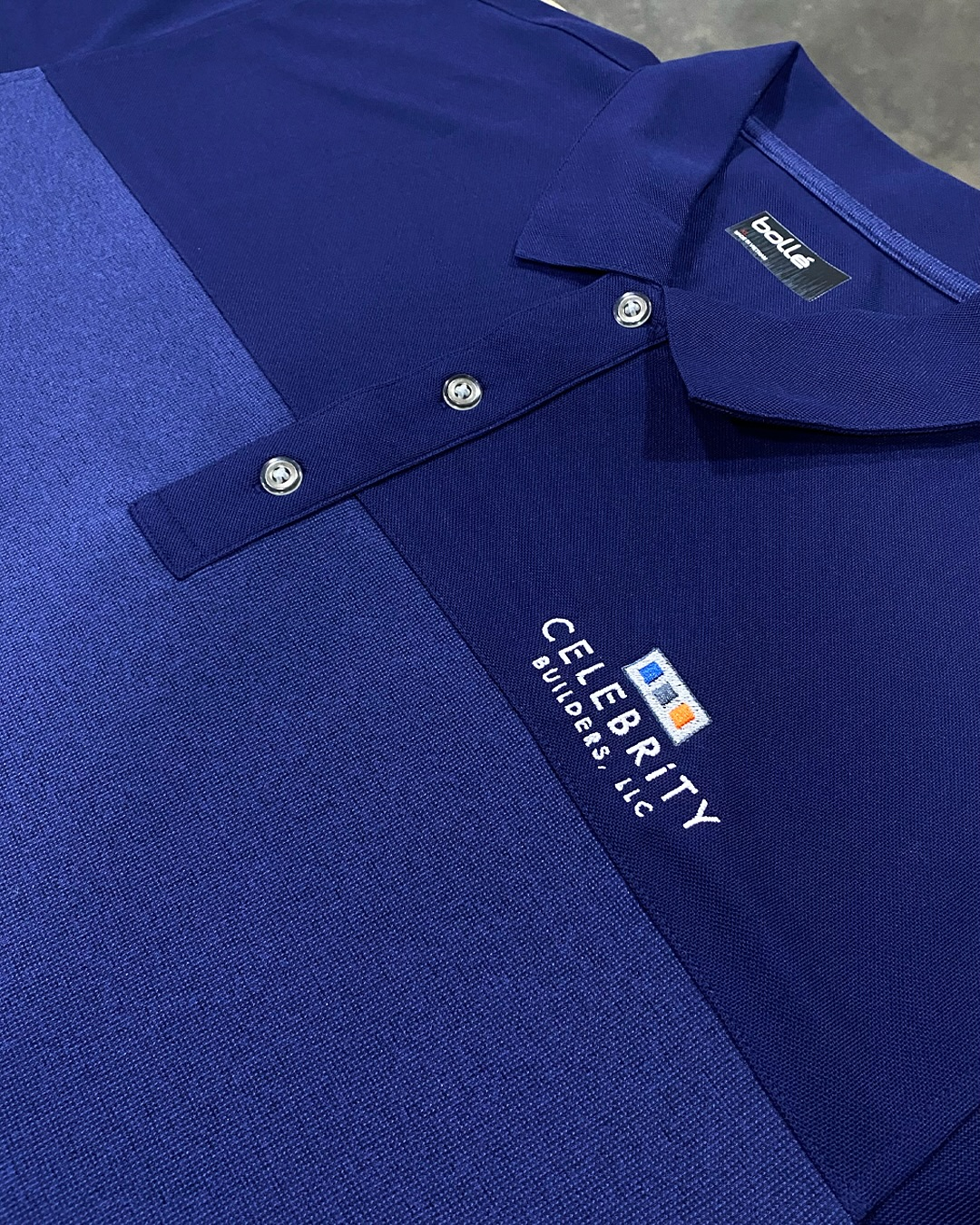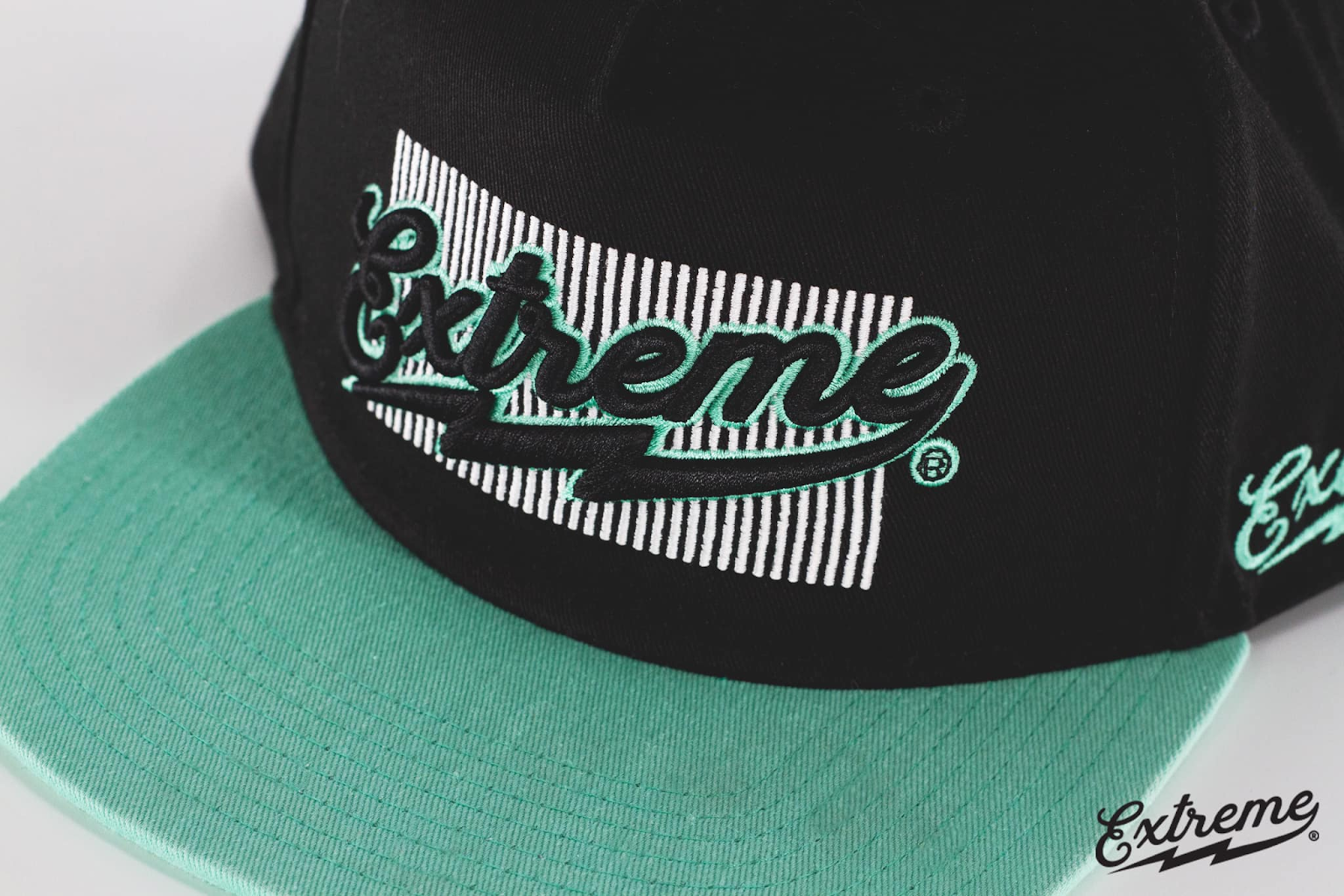

Logo embroidery transforms ordinary garments into powerful branding tools that elevate your small business's professional appearance. This form of needlework decorates fabric using stitched thread, typically by following a digitized design, creating durable, high-quality designs that last a lifetime. For small business owners and marketing professionals, understanding proper design guidelines ensures your embroidered logos achieve maximum impact while avoiding costly production issues.
Successful logo embroidery requires careful consideration of design simplification, technical specifications, and garment compatibility. Unlike other decoration methods, embroidery has unique limitations that must be addressed during the design phase to achieve professional results. This comprehensive guide provides actionable strategies to optimize your logo embroidery projects from concept to completion.

Design preparation represents the foundation of successful logo embroidery projects. Complex logos often contain intricate details that translate poorly to stitched thread, requiring strategic simplification without compromising brand recognition. Begin by examining your existing logo for elements that may cause production challenges, such as thin lines, small text, and excessive color gradients.
Simplification begins with converting complex graphics into bold, defined shapes. Remove decorative elements that measure less than 1/8 inch in width, as these details will not reproduce clearly in thread. Combine closely spaced elements to prevent thread buildup and potential fabric puckering. When your logo contains multiple design elements, prioritize the most recognizable components to maintain brand integrity while ensuring embroidery compatibility.
Text elements require special attention during the preparation phase. Each character within your design should measure at least 1/4 inch tall to ensure legibility, with each letter adding approximately 100 stitches to the total stitch count. For logos that contain taglines or secondary text, consider creating separate placement options that allow for larger text sizes while maintaining overall design balance.
Font selection plays a crucial role in embroidery success. Serif fonts with thin strokes often result in poor stitch quality, while clean, bold sans-serif fonts translate effectively to thread. When your brand requires specific typography, work with experienced digitizers who can modify letter spacing and stroke width to optimize embroidery performance.
Consider creating multiple logo versions optimized for different embroidery applications. Develop a simplified version for small placements, such as shirt pockets; a medium-complexity version for standard chest placements; and a detailed version for larger applications, such as jacket backs. This approach ensures consistent brand presentation across various garment types while maintaining embroidery quality standards.
Design scalability becomes essential when planning comprehensive embroidery programs across multiple product lines. Create a master design library that includes variations for different size requirements, from small 1-inch applications to prominent 6-inch back placements. Document specific design modifications for each size category, including stitch density adjustments, detail simplification requirements, and color consolidation strategies.
Brand consistency requires establishing design standards that translate effectively across all embroidery applications. Develop comprehensive brand guidelines specifically for embroidered applications, including approved color combinations, minimum size requirements, and placement specifications. These guidelines ensure consistent brand representation, regardless of garment type or embroidery provider, thereby maintaining a professional appearance across all branded apparel.
Understanding technical specifications prevents production delays and ensures consistent results across your logo embroidery projects. Stitch count represents the total number of stitches required to complete your design, directly affecting production time, thread usage, and overall cost. A standard 1-inch square area typically requires approximately 2,000 stitches, while smaller 1/4-inch blocks need around 125 stitches.
Design dimensions significantly impact the quality of embroidery and the options for placement. Most standard logo placements range from 3 to 4 inches in width, with chest placements typically measuring 3.5 inches maximum to maintain professional proportions. Larger designs may require different stitch types and density adjustments to prevent fabric distortion during production.
Thread color limitations affect design complexity and production efficiency. Most embroidery projects work best with a maximum of 6 to 8 thread colors, as excessive color changes can increase production time and complexity. When your logo features gradient effects or color blends, collaborate with digitizers to select thread colors that best represent your brand while ensuring embroidery feasibility.
File format requirements ensure a smooth production workflow. Vector formats, including AI, EPS, or high-resolution PNG files, provide digitizers with clean artwork for optimal conversion. Avoid low-resolution JPEG files or compressed formats that may introduce artifacts, which can affect digitization quality. Include Pantone color specifications when precise color matching is required for brand consistency.
Digitization represents the process of converting your artwork into machine-readable stitch patterns. Professional digitization takes into account fabric type, thread characteristics, and machine capabilities to optimize stitch sequencing and density. Quality digitization prevents common issues, including thread breaks, fabric puckering, and design distortion that can compromise your finished products.
Avoiding common design mistakes saves time and money and ensures professional results for your logo embroidery projects. Oversized designs represent one of the most frequent errors, particularly when attempting to reproduce detailed logos without proper simplification. Designs exceeding recommended size limits may experience thread tension issues, fabric distortion, and compromised stitch quality.
Inadequate text sizing can lead to legibility issues that impact brand recognition. Text smaller than 1/4 inch in height often results in filled-in characters where individual letters become indistinguishable. When logos include essential text elements, prioritize readability over exact reproduction of printed materials. Consider alternative approaches such as separate text placement or simplified typography to maintain message clarity.
Excessive design density can cause fabric puckering and thread buildup, compromising the garment's appearance. Dense designs require strategic planning to distribute stitches evenly while maintaining design integrity. Work with experienced digitizers who understand proper underlay techniques and stitch direction to prevent density-related issues.
Color sequence planning affects production efficiency and quality. Random color changes can increase machine setup time and potentially lead to registration issues. Organize thread colors logically, starting with background elements and progressing to foreground details. This approach minimizes color changes while ensuring proper stitch layering for optimal visual impact.
Failing to consider fabric factors leads to suboptimal embroidery performance across various garment types. Lightweight fabrics require different stabilization approaches compared to heavy workwear materials. Stretchy fabrics need specialized techniques to prevent design distortion during wear. Match your logo embroidery specifications to intended garment applications for consistent results.
Inadequate sample approval processes lead to production runs that fail to meet expectations. Always request digitization samples before approving large quantity orders. A sample review allows for adjustments to stitch density, color matching, and design placement before committing to full production. This investment in quality control prevents costly reprints and ensures customer satisfaction.
Garment selection has a significant impact on the success of logo embroidery, as different fabric types require specific design adaptations and production techniques. Polo shirts and dress shirts represent ideal embroidery applications due to their stable fabric construction and professional appearance. These garments accommodate standard logo placements while providing excellent stitch definition and durability.
Heavy workwear, including jackets and uniforms, accommodates larger and more detailed logo embroidery applications. The stable fabric construction supports higher stitch counts and complex designs without concerns about distortion. Consider enhanced placement options, such as back yokes or sleeve applications, that utilize increased fabric stability and available space.
T-shirts and lightweight casual wear require modified approaches due to differences in fabric stretch and construction. Logos on these garments should use lower stitch density and simplified designs to prevent fabric distortion. Placement considerations become crucial, as lightweight fabrics may require additional stabilization to maintain a professional appearance through multiple wash cycles.
Caps and headwear present unique challenges, including curved surfaces and limited placement areas. Logo designs for caps typically require height compression and simplified details to accommodate the curved embroidery surface. Front panel placements are best suited for primary logo applications, while side and back placements may require additional design modifications.
Specialty items, including bags, towels, and promotional products, each have specific requirements affecting logo embroidery success. Bag embroidery often accommodates larger designs due to fabric stability, while towel applications require terry-friendly digitization techniques. Understanding these material-specific requirements ensures optimal results across a wide range of product applications.
Performance fabrics and moisture-wicking materials need specialized considerations, including stabilization techniques and thread selection. These advanced textiles may require modified stitch types and density adjustments to maintain fabric functionality while achieving quality embroidery results. Work with experienced embroidery providers who understand performance fabric requirements.

Implementing comprehensive quality control measures throughout your logo embroidery process guarantees professional results that enhance your brand presentation. Pre-production planning begins with a detailed review of artwork and verification of technical specifications. This stage identifies potential issues before production begins, preventing costly corrections and delays.
Digitization review represents a critical quality checkpoint where stitch patterns receive thorough evaluation. Experienced digitizers analyze stitch density, direction, and sequencing to optimize embroidery performance. This technical review ensures designs translate effectively from artwork to finished embroidery while maintaining brand accuracy and visual impact.
Sample approval provides the final quality verification before full production begins. Physical samples enable the evaluation of thread colors, stitch quality, and the overall appearance of the design on actual garment materials. Use sample reviews to verify color matching, assess design placement, and confirm sizing meets your requirements. Document approved samples for future reference and consistency.
Production monitoring ensures consistent quality throughout the entire order fulfillment process. Regular quality checks during production identify potential issues early, allowing for immediate corrections. Monitor thread tension, stitch formation, and design registration to maintain quality standards across all finished garments.
Final inspection protocols verify each completed garment meets established quality standards. Check for loose threads, proper design placement, and overall appearance before packaging. Implement systematic inspection procedures that catch quality issues before products reach customers, protecting your brand reputation and customer satisfaction.
Documentation and feedback processes support continuous improvement for future logo embroidery projects. Maintain records of successful design specifications, digitization parameters, and production notes for reference. Use customer feedback and quality assessments to refine processes and prevent recurring issues in subsequent orders.
Supplier partnership development ensures access to skilled digitization services and quality embroidery production. Establish relationships with experienced embroidery providers who understand your brand requirements and quality standards. Regular communication with suppliers about design modifications, production timelines, and quality expectations creates collaborative partnerships that enhance project success.
Cost management strategies help maximize your embroidery investment while maintaining quality standards. Understand how design complexity, stitch count, and color changes affect pricing to make informed decisions during the design phase. Consider volume commitments and long-term partnerships that may provide pricing advantages for ongoing embroidery programs. Balance cost considerations with quality requirements to achieve optimal value for your branding investments.
How small can text be in logo embroidery while remaining readable? Text elements must measure at least 1/4 inch in height to ensure proper legibility in embroidered form. Characters smaller than this dimension often become filled in with thread, making individual letters indistinguishable. For optimal readability, consider 3/8 inch height for critical text elements, especially when using decorative or script fonts.
What factors determine the final cost of logo embroidery projects? Embroidery costs depend on stitch count, design complexity, color changes, and order quantity. Higher stitch counts require more production time and thread, increasing per-piece costs. Multiple color changes add setup time and complexity. Larger order quantities typically result in reduced per-piece pricing through production efficiencies and the distribution of setup costs.
How do thread color limitations affect logo reproduction accuracy? Most embroidery projects work best with a maximum of 6-8 thread colors to maintain production efficiency and cost control. Complex logos with numerous colors may require the consolidation or simplification of their color palette. Collaborate with embroidery providers to select thread colors that accurately represent your brand while adhering to practical color limitations.
What file formats work best for embroidery digitization? Vector formats, including Adobe Illustrator (AI) and Encapsulated PostScript (EPS), provide optimal quality for digitization. High-resolution PNG files with transparent backgrounds also work well. Avoid compressed JPEG formats or low-resolution images, as they may introduce artifacts that affect digitization accuracy.
How long does the digitization process typically take? Professional digitization usually requires 1-3 business days, depending on the design complexity and the provider's workload. Rush services may be available for urgent projects at an additional cost—factor in digitization time when planning your project timeline, especially for time-sensitive promotional campaigns or events.
What happens if the embroidered logo doesn't match my brand colors exactly? Thread color matching involves selecting the closest available thread colors to your brand specifications. Exact Pantone matches may not be possible due to limitations of the thread manufacturer. Request thread color samples before production to evaluate color accuracy and approve acceptable alternatives when perfect matches aren't available.
Can existing embroidered logos be easily modified or updated? Modifying existing embroidered designs requires new digitization work, as embroidery files cannot be easily edited like digital graphics. Significant design changes typically require complete re-digitization. Minor adjustments, such as color changes, may be possible depending on the original design structure and complexity.
Professional logo embroidery transforms your brand vision into durable, high-impact promotional tools that represent your business with distinction. Success requires understanding design limitations, technical specifications, and quality control measures that ensure consistent results across all your branded apparel applications.
Extreme Screen Prints specializes in converting artwork into professional embroidery applications that meet the highest quality standards. Our experienced digitization team works with your existing logos to optimize designs for embroidery while maintaining brand integrity and visual impact. From initial design consultation through final quality inspection, we ensure your logo embroidery projects exceed expectations.
Ready to elevate your brand with professional logo embroidery? Get an instant embroidery quote to discover how our comprehensive embroidery services can bring your promotional apparel vision to life. Our team provides detailed guidance throughout the design optimization process, ensuring your investment delivers maximum brand impact and lasting value.
Contact our embroidery specialists at 616-202-1133 to discuss your specific logo embroidery requirements and discover why businesses trust Extreme Screen Prints for their most critical branding projects.